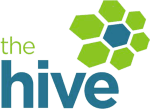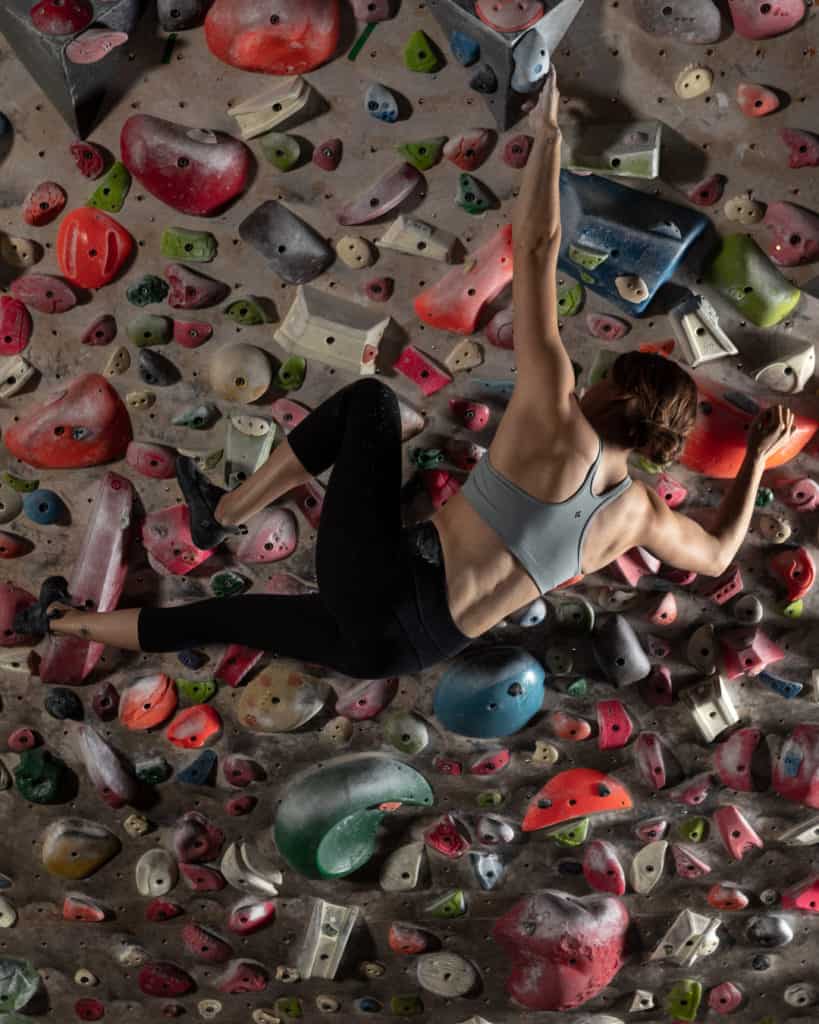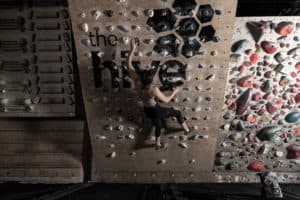If you’ve taken a tour of our Vancouver, North Shore, or PoCo bouldering gyms, you have most likely seen one of these overhanging walls with a set of holds that rarely change. Perhaps even scarier, these walls can be adjusted from ‘steep’ to ‘even steeper’. If you find these boards daunting, you’re not alone!
We have a variety of systems boards, which is a fancy name for a spray wall, or a wall with many holds on it. We also have specific kinds of training boards: the Moonboard and the Kilter board. These boards have a specific hold setup and problem log, so you can go around the world to another gym that has the same board and climb the same problems! Cool, huh?
Many people can find systems boards intimidating to use, with their steep overhangs well-trafficked holds, and (often) serious-looking climbers doing laps or waiting on the sidelines. Our education coordinator, Sarah Beaver, is here to tell you some tips on how to start your systems board journey. Follow these steps to avoid injury ease your worries and take your training up a notch!
- Start out on the adjustable systems boards at Hive North Shore.The Hive North Shore’s Evolv Tech Lab has two systems boards that are fully adjustable, so you can make the angle as flat or overhanging as you wish. Start out flatter then slowly change the angle as you get more comfortable with the overhang. The holds are diverse and you can have fun with your friends making up problems
- Climb on the Kilter board at Hive PoCoThe Hive PoCo has a Kilter board, which is similar to a Moonboard, except it’s wider, has more holds, and can be adjustable. The cool part: problems can be climbed at every angle and the grade will adjust the more or less overhanging you go. This is similar to the HNS systems boards, but there is a problem log on the Kilter app, so you don’t always have to make up your own problems.
- Climb up the Moonboard using any holds you likeThe next step will be to climb up the Moonboard (either at Hive Vancouver or Hive North Shore) using any holds that you want. These holds are all very different from each other and tend to be a bit small. Trying to get up the board with any holds will get your fingers used to the set and your body used to the overhang.
- Start trying the Moonboard problemsThe last and final step will be to start trying the problems in the Moonboard app. The benchmark problems are deemed to be the best of the best and have a large variety of styles and hold types. The logged problems start at V4/6B+, so ensure that you are prepared!
All of these systems boards are great training tools, no matter what “stage” you’re at. Making use of all of these climbing tools is a great way to enhance your training and continue your progress.
If you are wanting more guidance on these boards, try one of our adult courses, like The Next Hex. The instructors can show you how to effectively work these into your training.
Kilter board App: Google/Apple
Moonboard App: Google/Apple




